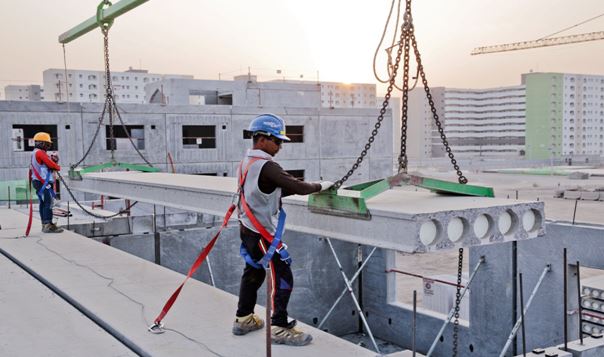
Many construction companies face issues and pitfalls that slow down their projects quite substantially. Some of the most common problems include double entry, the lack of transparency, and never ending delays.
Here, a lack of consistency during the execution of a construction program is one of the biggest causes of concern. This leads to missed deadlines and cost overruns and a project can easily get delayed for months. Meanwhile the workforce has to be paid and materials keep moving, thus driving costs higher. When every project team is working on different software programs, the odds are that it will lead to mismanagement due to lack of uniformity. This is in spite of the fact that they are all working on the same project. Information ends up being tightly compartmentalized and crucial data gets lost in transit from one team to another.
Let us consider what usually happens across individual facets of one single but large project. If the different teams can’t coordinate properly, we will quickly see that the misalignment of data decreases the efficiency of the projects. If this issue is not rectified in time, the whole construction program will eventually end up being run on a distorted version of reality. The end result: missed deadlines and skewed projections.
However, using advanced construction management software for builders and contractors can easily help standardize different processes all across the spectrum. Not only will you be able to meet all your targets in the stipulated time frame, but doing so will also decrease the usual anxiety around completion dates.
Contents
1. It Will Help You Allocate Roles and Streamline the Approval Process
It is absolutely imperative to ensure that the right people have unrestricted access to the right information. However, it is also equally important to ensure the security of that information on a need to know basis. The project manager already has a lot ot handle without worrying about lax security protocols.
Before the advent of construction software, project managers and company owners used to send emails to the relevant people and that was that. However, critically important files sometimes ended up in the junk folder or they were not received. Many people simply forgot to attach the files and sent blank emails. This led to a lot of confusion, delays and headaches as the work schedule suffered.
However, construction software enables you to standardize all access rights for individual users. This way, it is possible to only entrust people with the files they require for the successful completion of their tasks. In short, you will be able to secure your data and more importantly, make sure that the team members have received what you sent.
Since most of the better construction software are inherently flexible, you can also change the access levels as per your own particular requirements. Once you configure the user level access settings, it will be a pretty straightforward plug and play affair from that point onwards.
2. Document Management
Managing paper documentation can be a difficult task when taking care of large construction projects. Traditionally, most companies relied on physical infrastructure to store their paperwork and used to courier it to people, as and when required. The digital age meant using file sharing software where you can simply place your files so that they will be accessible to people who have the same password. While this is a lot more efficient, it forces you to jump from your construction software to some other platform. Unfortunately, these solutions are not optimized for specific tasks, so they won’t work as well as dedicated construction document management software. Their access rights are relatively primitive, as is their overall structure.
3. Better Workflows
This is another key area where uniformity through construction software will have a huge impact. Such software solutions have the capability of being configured to your exacting standards and requirements.
You will be able to store historical information in one location in a consistent manner in the same format. In other words, you won’t need to jump through different platforms to get the same reports.
4. An Optimized Approvals Process
The approvals process can be very frustrating for most construction projects. It’s not just the endless wait for the approval itself, but the knowledge that it has been passed from one person to the next. This red tape can create delays running from days to months. The frustration piles up if there are multiple permission and approvals needed for the many different facets of a project.
However, using a construction management software for small business means having access to pre-set templates for each approval process. They are both automated and consistent for all approval processes and they will inform you the moment your approval has come through.
5. Cost Controls
Yes, it is possible to run project financials in MS Excel, but it is not very easy to crunch numbers in this format. If the spreadsheet guru who made them has gone, you will have to decipher the formula and the templates to use them for other projections. It is likely that the sheets will be passed from person to person with everyone drawing their own conclusions. The more the changes are made, the more difficult it will become for the next person to interpret the information.
However, using construction software will ensure that each project budget will run on its own standard template for every team. You can build your own cost control measures to ensure implementation all across the board. Finally, it is a whole lot easier to work with data on such a system when compared to other alternative platforms.
Conclusion
Creating uniformity all across the construction process will help you to make sure that you are able to finish the project on time and on schedule. You won’t have to worry about needless delays and cost overruns.
All your answers will be at your finger tips and you can race ahead with the completion of all of your projects.